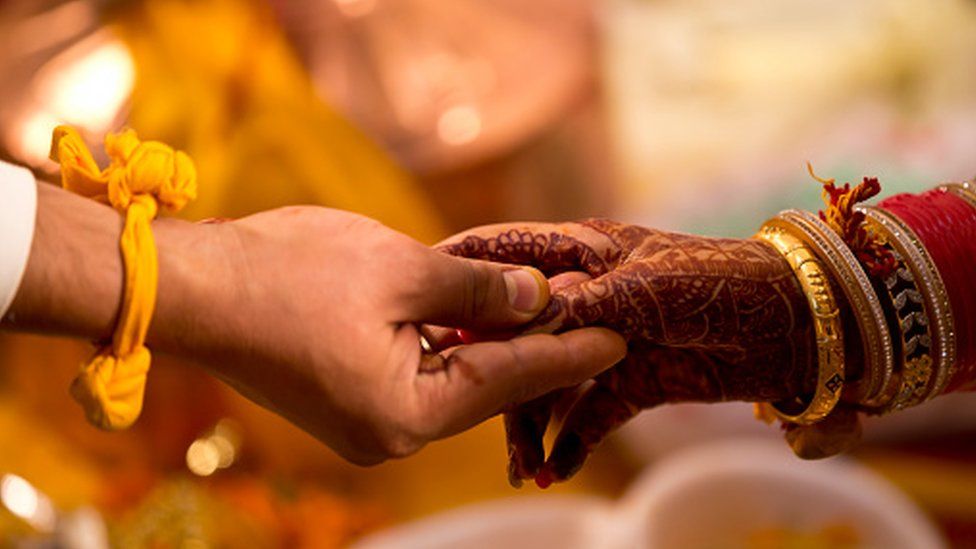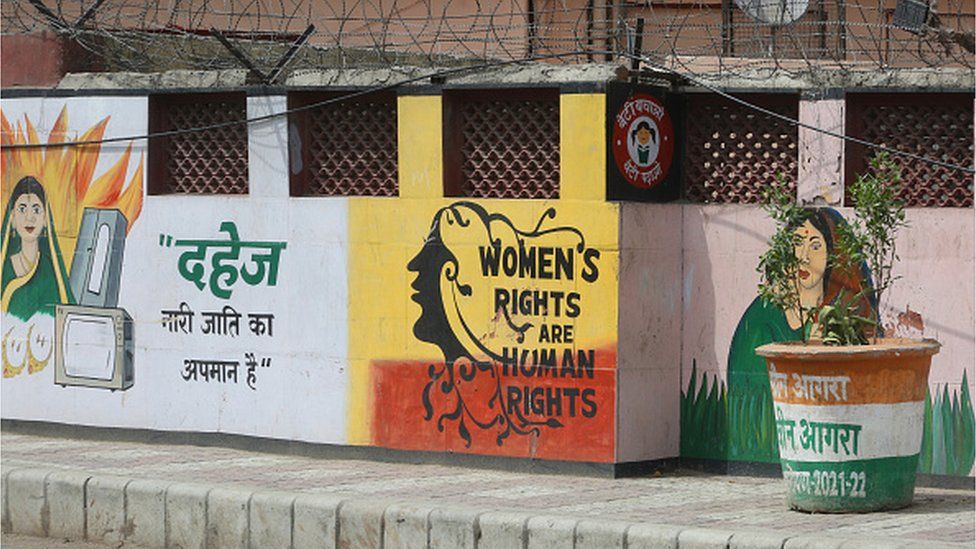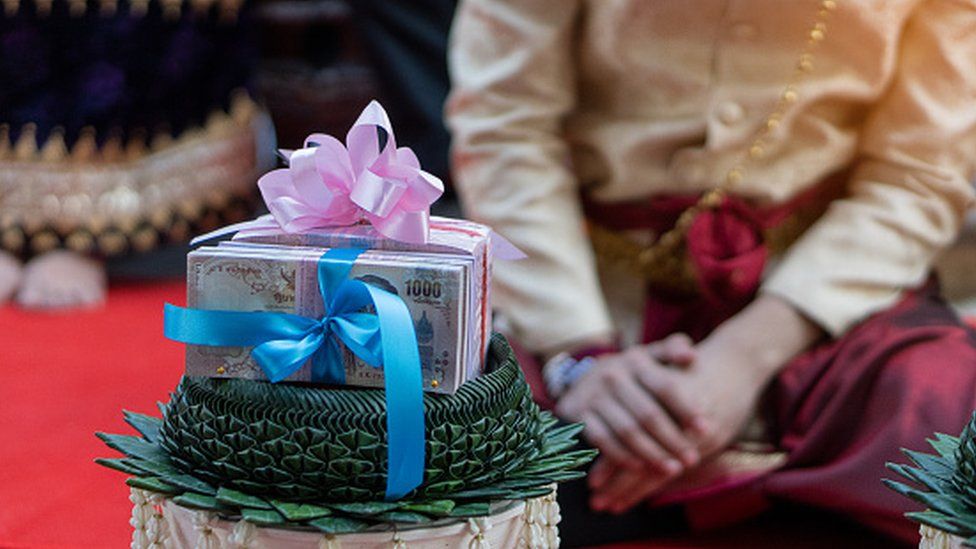
Audio By Carbonatix
As education and job opportunities for men in India have improved over the decades, the prevalence of dowry has increased, a new study has found.
Paying and accepting dowry is a centuries-old tradition in South Asia where the bride's parents gift cash, clothes and jewellery to the groom's family. Even though the practice has been illegal in India since 1961, it continues to thrive and leaves women vulnerable to domestic violence and even death.
Jeffrey Weaver of University of Southern California and Gaurav Chiplunkar of University of Virginia examined more than 74,000 marriages in India between 1930 and 1999 to examine the evolution of dowry over time.
They calculated "net dowry" as the difference between the value of cash and gifts given by the bride's family to the groom or his family and those given by the groom's family to the bride's family. The researchers relied on data from India's Rural Economic and Demographic Survey, a panel survey of households across 17 of India's most populous states.
Most Indian marriages are still arranged, and nearly all women marry by their late twenties. Some 90% of the marriages studied until 1999 involved dowry. Dowry payments between 1950 and 1999 amounted to nearly a quarter of trillion dollars.
The study found that economic growth perpetuated and boosted the practice of dowry payments, especially from the 1940s to the 1980s, Mr Weaver told the BBC."Over this period, more men were getting educated and getting better quality jobs, which led to rise in dowry," he says.


Marriage in India
- Nearly all marriages in India are monogamous
- Less than 1% end in divorce
- Parents play an important role in choosing the bride/groom - in more than 90% of marriages between 1960 and 2005, parents chose the spouse
- Over 90% of couples live with the husband's family after marriage
- More than 85% of women marry someone from outside their own village
- 78.3% of marriages are within the same district
Source: India Human Development Survey, 2005; National Family Health Survey 2006; REDS, 1999

According to the study, the emergence and evolution of dowry can be most effectively understood by considering the changing distribution of groom quality, which correlates with advancements in their education and earnings. (The low participation of women in India's workforce means the presence of more and better jobs for men.)
In other words, 'higher quality grooms' - well-educated and having better quality jobs - command higher dowries. As the number of educated grooms in a marriage market increases, there's a decrease in the "dowry premium" that more educated grooms receive, the study found.
"Strong economic factors perpetuate dowry. On the bride side, families who refuse to pay dowry for their daughters are left with 'lower quality' grooms. Grooms have a strong economic incentive to accept dowry, particularly if their family has to pay dowry for its own female children or wants to recoup investments in groom's education," write Mr Weaver and Mr Chiplunkar.

Is this possibly unique to India? A separate paper by Siwan Anderson of University of British Columbia argues that unlike India, dowry payments showed a decline with increasing wealth in many societies, including Europe. Ms Anderson says that increases in wealth in caste‐based societies like India also led to increases in dowry payments.
Mr Weaver and Mr Chiplunkar say that their research finds little evidence for the conventional explanations about the rise of the practice of dowry.
One theory is that dowry was practised among upper caste households and spread as lower castes emulated these practices to improve their social mobility. The new study says this is not clear because the practice of dowry began around the same time for both the high and low caste groups.
Also, some experts believe that the desire among lower caste women to marry higher caste men drove changes in dowry. Mr Weaver says this view is "incorrect" since there is "so-little cross-caste marriage" - 94% of the marriages studied were of Hindus who married within their broad caste group.
So what happens to dowry payments as more women get educated?

Over the past two to three decades, there has been a notable surge in women's education, which is outpacing that of men in India. This could potentially lead to a decline in dowry practices, but there is no supporting data, says Mr Weaver.
But the study did find evidence that the "size of dowry payment decreases" as more women got educated in an area.
However, the impact of increasing average female education by one year is significantly smaller compared with increasing average male education by the same duration, the study found. This is probably because women were less likely to work and thus "get economic returns from their education in the labour market".
Clearly, promoting women's education and increasing their participation in the workforce can help tackle the scourge of dowry.
Latest Stories
-
Kusaal Wikimedians take local language online in 14-day digital campaign
34 minutes -
Stop interfering in each other’s roles – Bole-Bamboi MP appeals to traditional rulers for peace
49 minutes -
President Mahama to address nation in New Year message
1 hour -
Industrial and Commercial Workers’ Union call for strong work ethics, economic participation in 2026 new year message
3 hours -
Crossover Joy: Churches in Ghana welcome 2026 with fire and faith
3 hours -
Traffic chaos on Accra–Kumasi Highway leaves hundreds stranded as diversions gridlock
3 hours -
Luv FM Family Party in the Park: Hundreds of families flock to Luv FM family party as more join the queue in excitement
4 hours -
Failure to resolve galamsey menace could send gov’t to opposition – Dr Asah-Asante warns
4 hours -
Leadership Lunch & Learn December edition empowers women leaders with practical insights
4 hours -
12 of the best TV shows to watch this January
4 hours -
All-inclusive Luv FM Family Party underway with colour, music, and laughter as families troop in to Rattray Park
5 hours -
Jospong Group CEO, wife support over 5,000 Ghanaians with food, cash on New Year’s Day
6 hours -
Life begins at 40: A reflection on experience and leadership
6 hours -
Maresca leaves Chelsea after turbulent end to 2025
7 hours -
NPP still hurting after 2024 loss – Justin Kodua
7 hours

